Gran Canaria really lives up to its nickname, the “miniature continent.” You get golden dunes, lush pine forests, lively city beaches, and mountain villages all packed into one vibrant Canary Island. During my trip, I wandered through sandy deserts in Maspalomas, explored the cool highlands, and chilled out on the busy Las Canteras beach—never leaving the island.
The contrasts here honestly blew me away. One minute you’re on a sun-soaked coastline, and just a short drive later, you find yourself among volcanic hills and deep canyons dotted with small villages.

Each part of Gran Canaria has its own feel. Every day, something new caught my eye.
If you crave variety and adventure, this place delivers. Nature, city life, or a mix—Gran Canaria offers a bit of everything, all in one trip.
Unveiling the ‘Miniature Continent’: Gran Canaria’s Unique Landscape
Gran Canaria, one of Spain’s Canary Islands, squeezes an amazing range of landscapes into a small space. In a single day, I’d go from bizarre sand dunes to lush forests. The climate seemed to shift with every few miles.
From Golden Dunes to Volcanic Cliffs
I started in the south, where the Maspalomas sand dunes spread out like a golden ocean. The sand felt warm and soft under my feet.
Walking there, I could almost forget I was on an island. The dunes rolled beneath a big blue sky, and surfers caught waves just down the coast.
Not far from the dunes, the scenery flipped. I found myself standing at the edge of dark, jagged volcanic cliffs that dropped straight into the Atlantic.
The ocean crashed against sharp rocks below. Black and red stones lined the cliffs, reminders of the island’s fiery past.

Top sights in this area:
- Maspalomas Dunes Nature Reserve
- Playa del Inglés beach
- La Punta de Arguineguín cliffs
Exploring Pine Forests and Dramatic Mountains
I headed inland on narrow hiking trails that climbed above sea level. Soon, I walked into thick stands of Canary Island pine trees.
The air turned cool and fresh. Tall pines cast shadows on the rocky paths, and needles softened my steps.
Roque Nublo rises up here, an ancient volcanic rock pillar that hikers love. From its base, I could see rolling hills and small villages scattered below.
Birdsong and the wind through the trees were the only sounds in the quiet.
What you’ll see in the mountains:
- Roque Nublo
- Pico de las Nieves (the highest point)
- Tamadaba Natural Park
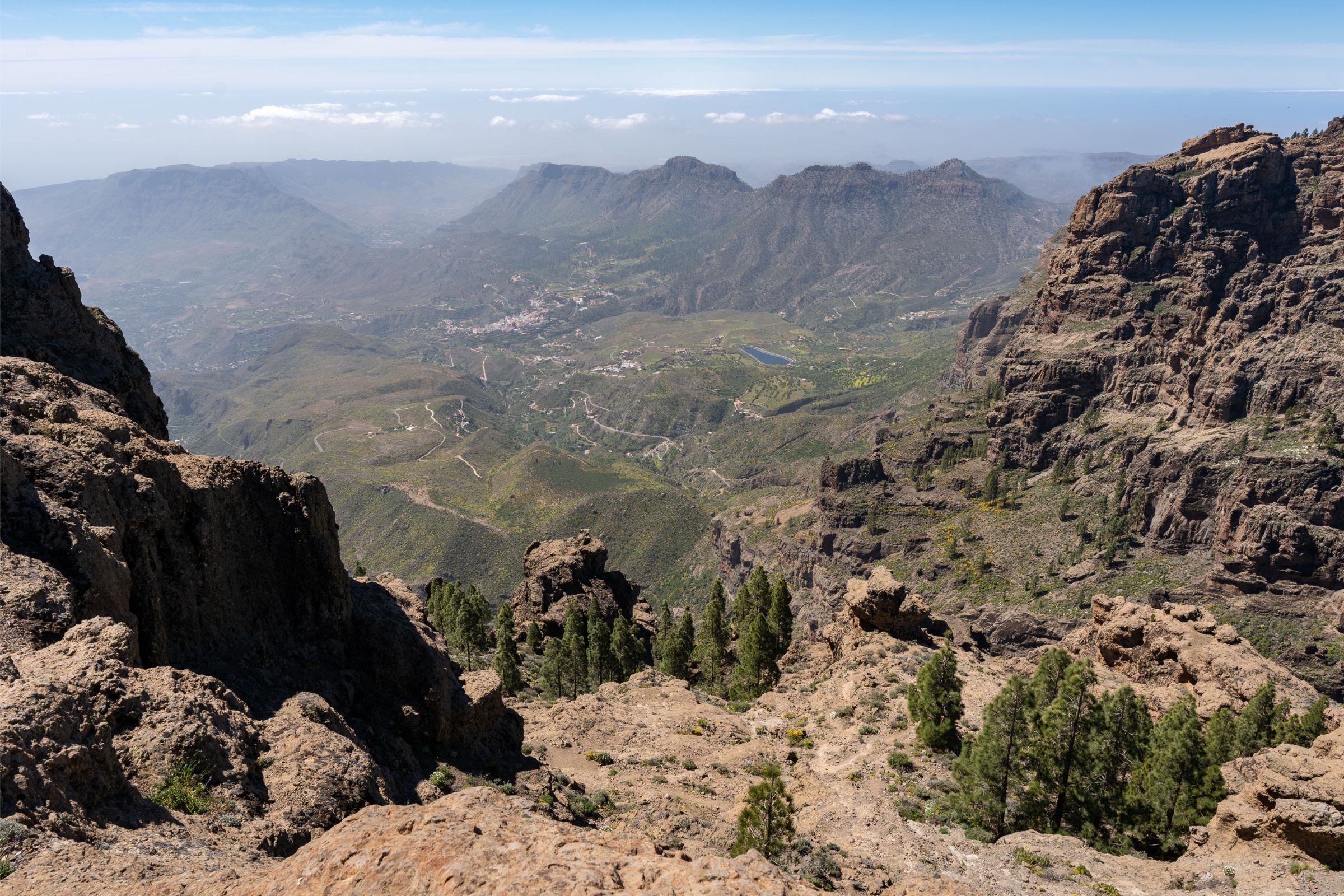
A Short Journey: Visiting Diverse Microclimates
What really surprised me? How quickly the scenery and weather changed. I’d start my morning in dry, sunny dunes.
An hour later, clouds hung low in a misty pine forest. By afternoon, I’d be on a breezy city beach near Las Palmas, watching locals play volleyball.
These fast shifts between climates meant I always kept a light jacket and swimwear in my bag. Exploring all these microclimates without traveling far made every day feel like a new trip.
It’s rare to find such diversity—from hiking trails to pristine beaches—all on one island.
Sun, Sea, and Sand: Discovering Gran Canaria’s Beaches
Gran Canaria boasts a wild mix of golden dunes, handy city beaches, and quiet coves along its coastline.
If I wanted to soak up the sun, stroll on soft sand, or swim in the city, this island always had the perfect spot.
The Allure of Maspalomas and its Dunes
From the moment I stepped into Maspalomas, I got why it’s so popular. The rolling sand dunes here look more like a desert than a beach.
Miles of golden sand stretch out beside the Atlantic, shimmering in the sunlight.
One of my favorite things? Walking barefoot across the warm sand, watching the wind create new patterns every day.
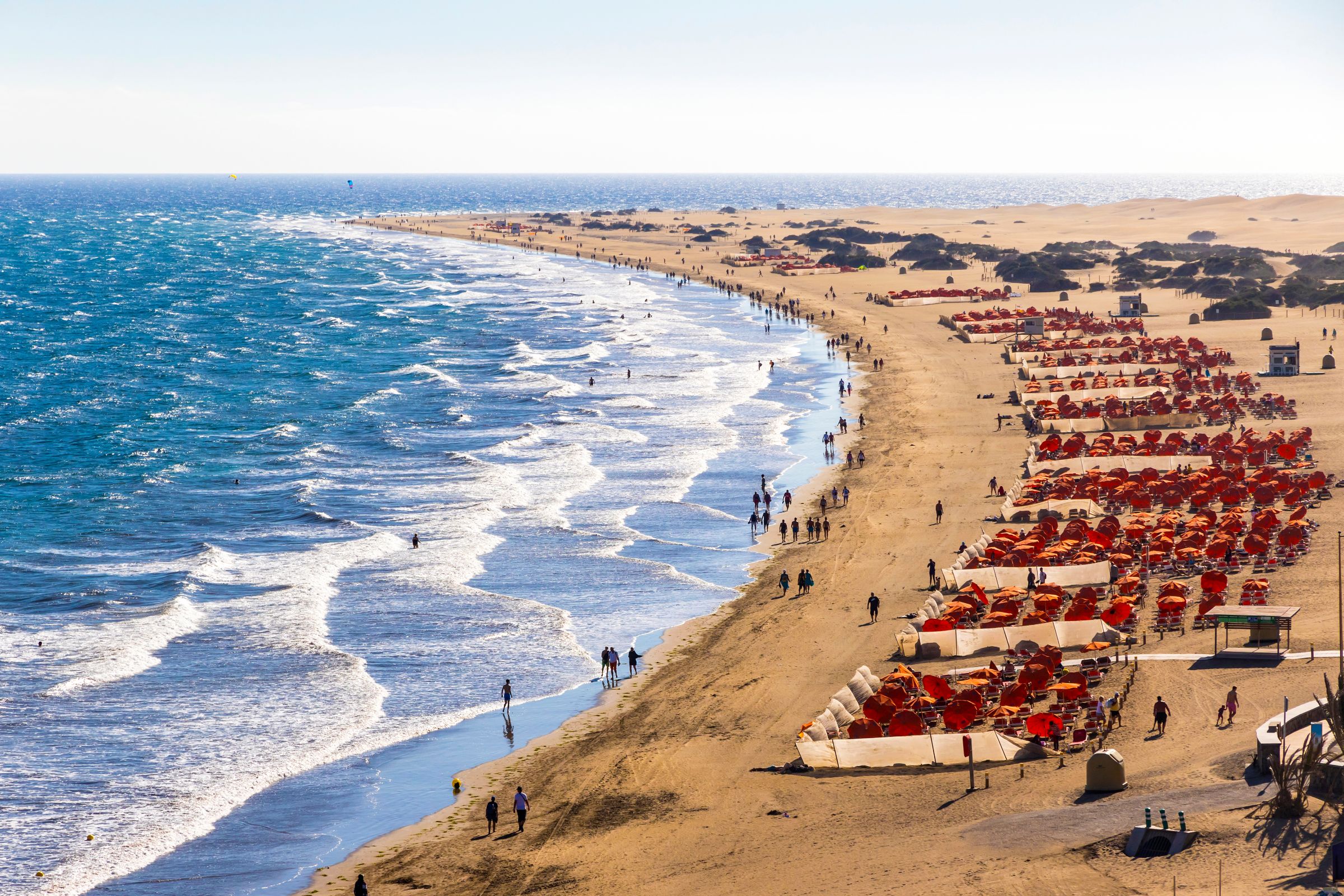
There’s plenty of space to lay out a towel. Colorful umbrellas dot the shore, and I often heard families laughing near the water.
Maspalomas blends wild beauty with just enough amenities for a full beach day. Beach bars (chiringuitos), sunbeds for rent, and cool drinks are always close by.
It’s no wonder people—locals and visitors—flock here to relax and soak up the island’s natural beauty.
Urban Escape: Las Canteras City Beach
Las Canteras in Las Palmas de Gran Canaria might be my favorite city beach ever. Right in the city’s heart, this long stretch of sand draws both locals and tourists.
Whenever I wanted a break, I could walk from busy streets straight onto a gorgeous beach.
The water stays clear and usually calm, thanks to a natural lava reef just offshore. Swimmers, snorkelers, and paddleboarders all share the sea here.
Behind the sand, the promenade buzzes with shops, cafés, and musicians. I loved sitting at a café with a coffee, feeling part of city life but still just steps from the waves.
Las Canteras is great for people-watching or joining a volleyball game. It’s perfect if you want city energy and easy swimming—no need to go far from restaurants or your hotel.
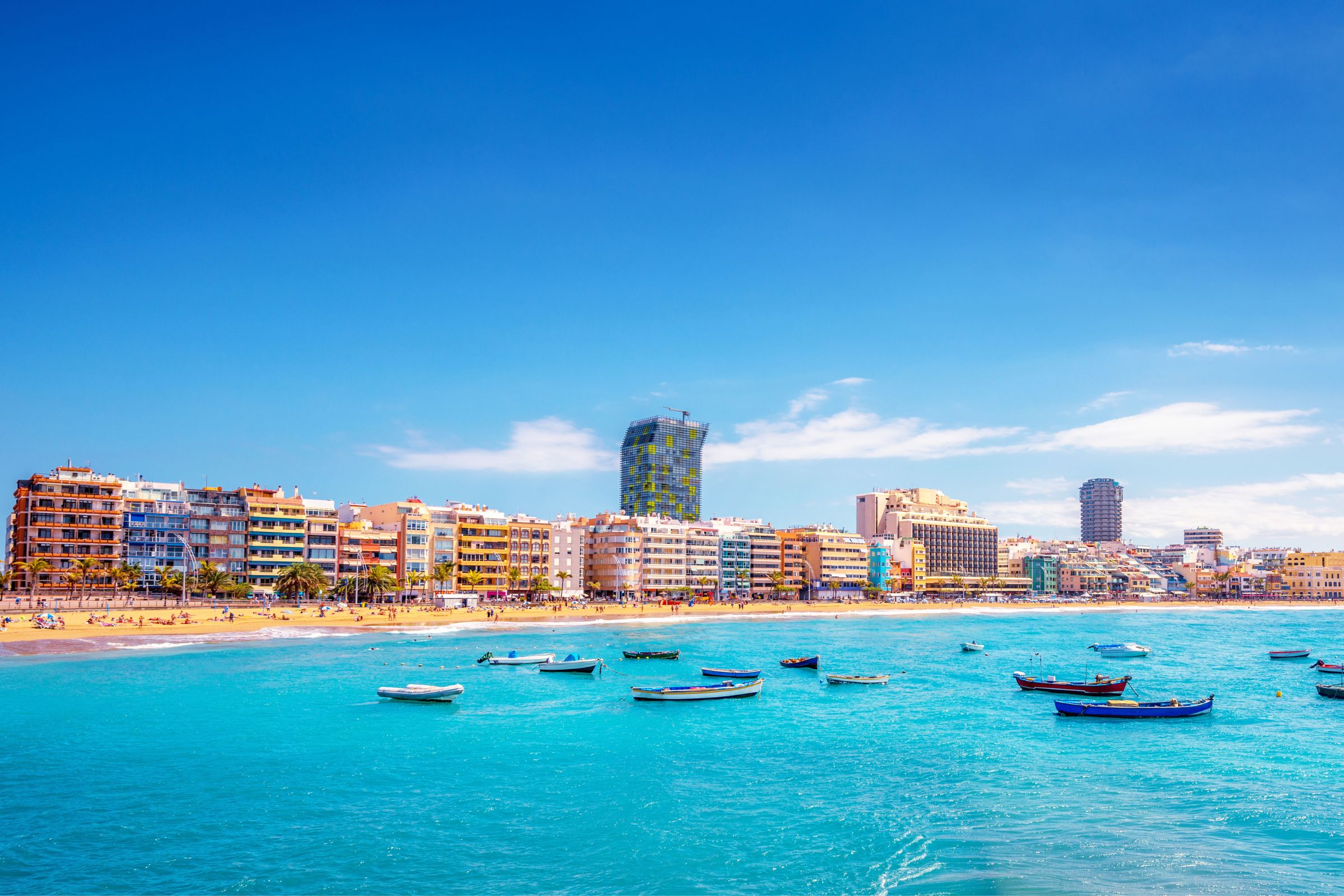
Hidden Coves and Family-Friendly Shores
Gran Canaria also hides some secret beaches and quiet coves beyond the main tourist spots. I spent a morning checking out smaller places like Playa de Amadores and Anfi del Mar.
These beaches have gentle waves and soft slopes, so they’re ideal for families with kids.
Playa de Amadores stands out with its crescent shape and turquoise water. You’ll find clean facilities and sunbed rentals in neat rows, making it easy to settle in for the day.
I saw families unpacking picnics while tourists lounged under palm trees.
If you’re after a quieter retreat, these lesser-known beaches offer peace away from the crowds. The water is shallow and safe, and the views of dramatic cliffs and blue skies make these spots feel special.
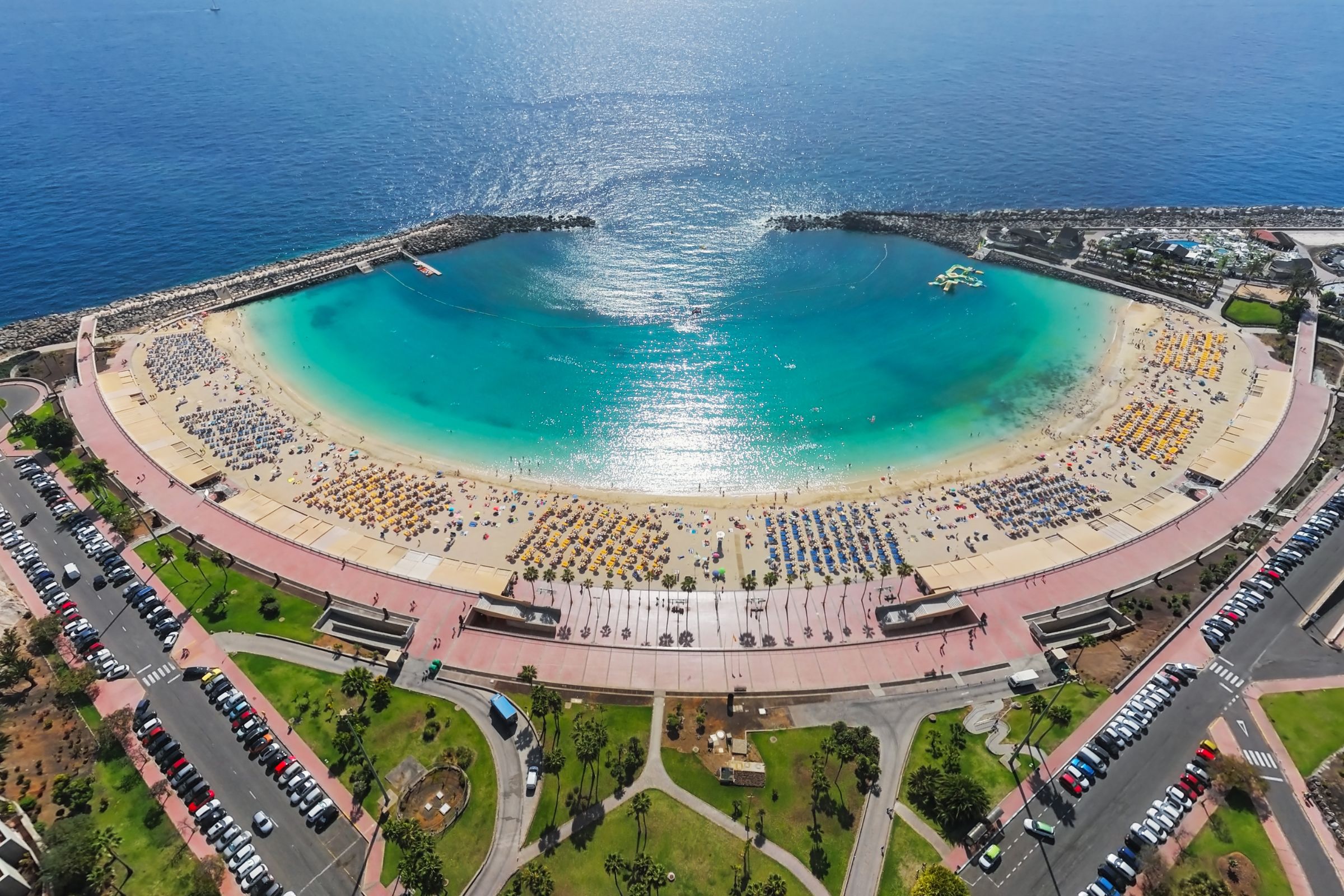
Beyond the Coast: Adventures in Nature and Authentic Villages
When I journeyed inland, Gran Canaria surprised me with wild volcanic peaks, colorful traditional towns, and deep pine forests far from the crowds.
The scenery changed so much—it almost felt like a different island.
Hiking Roque Nublo and Rural Trails
Roque Nublo stands out as the island’s most famous landmark. I set out early, hiking up winding trails through rocky ground and green pine woods.
Every step brought new mountain views. The path to the top is well-marked and not too tough—about 1.5 kilometers from the La Goleta parking lot.
At the summit, the huge rock towered almost 80 meters high. The view took my breath away. On clear days, I could even spot Tenerife’s Mount Teide in the distance.
Signs along the trail point out native plants and unique rocks, so you learn a bit as you go.
If you want more, Gran Canaria is full of rural footpaths, or caminos reales, that once linked remote villages. I found these trails much quieter, perfect for a peaceful walk. Sometimes I’d meet local hikers happy to share their favorite routes.
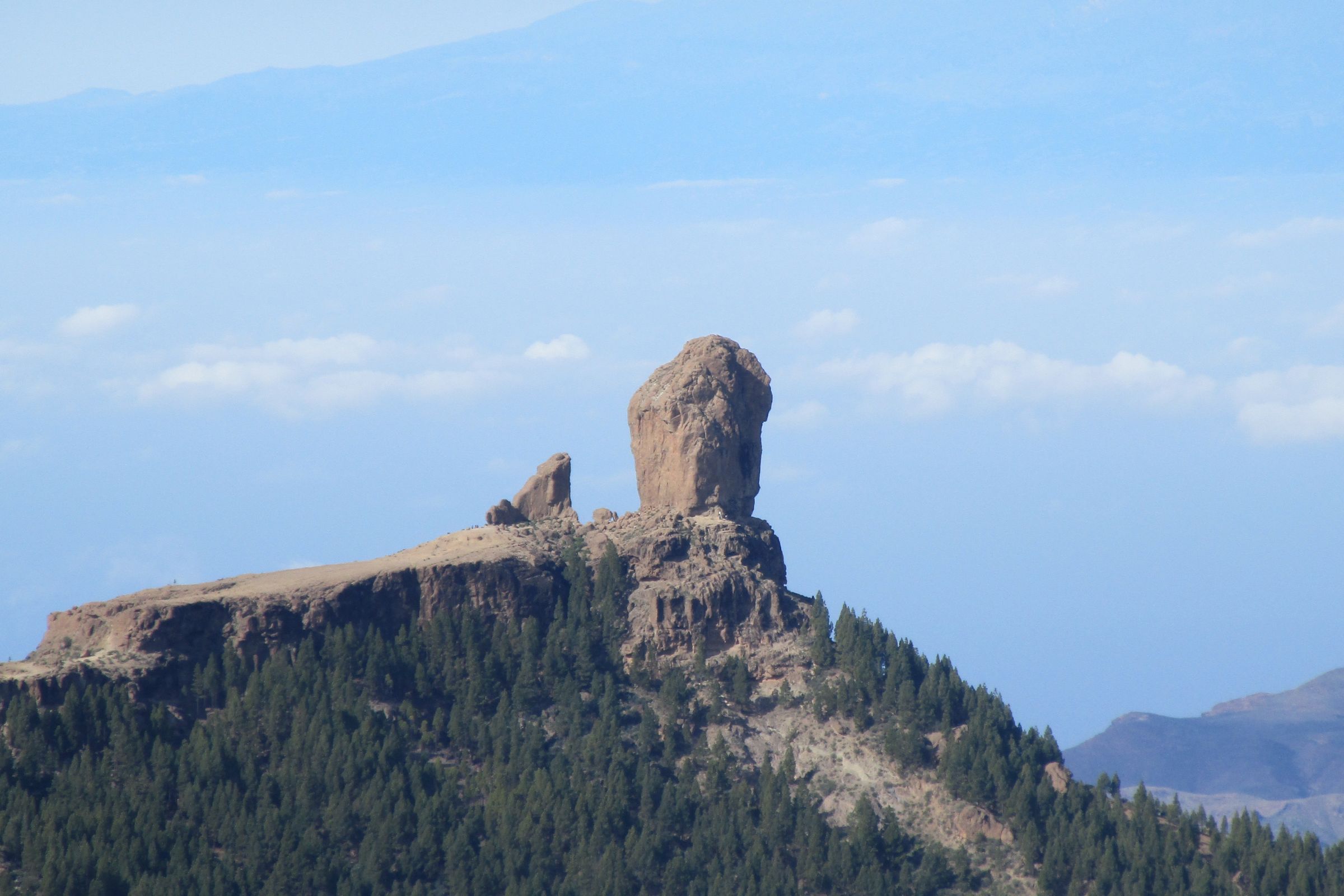
Wandering Through Agüimes and the Mountain Towns
Gran Canaria’s inland towns have a charm of their own. I wandered the cobblestone streets of Agüimes, with its pastel buildings and old churches.
Metal sculptures hid around corners, and I stopped at a tiny café for bienmesabe, a sweet almond dessert.
Locals welcomed me at the weekly market, selling homemade cheese and woven baskets. Not far from Agüimes, mountain towns like Tejeda and Teror invite you in with their wooden balconies and lively main squares.
Each village gave me a peek into real island life—kids playing in plazas, grandmothers chatting on benches, and views down green valleys dotted with cave houses.
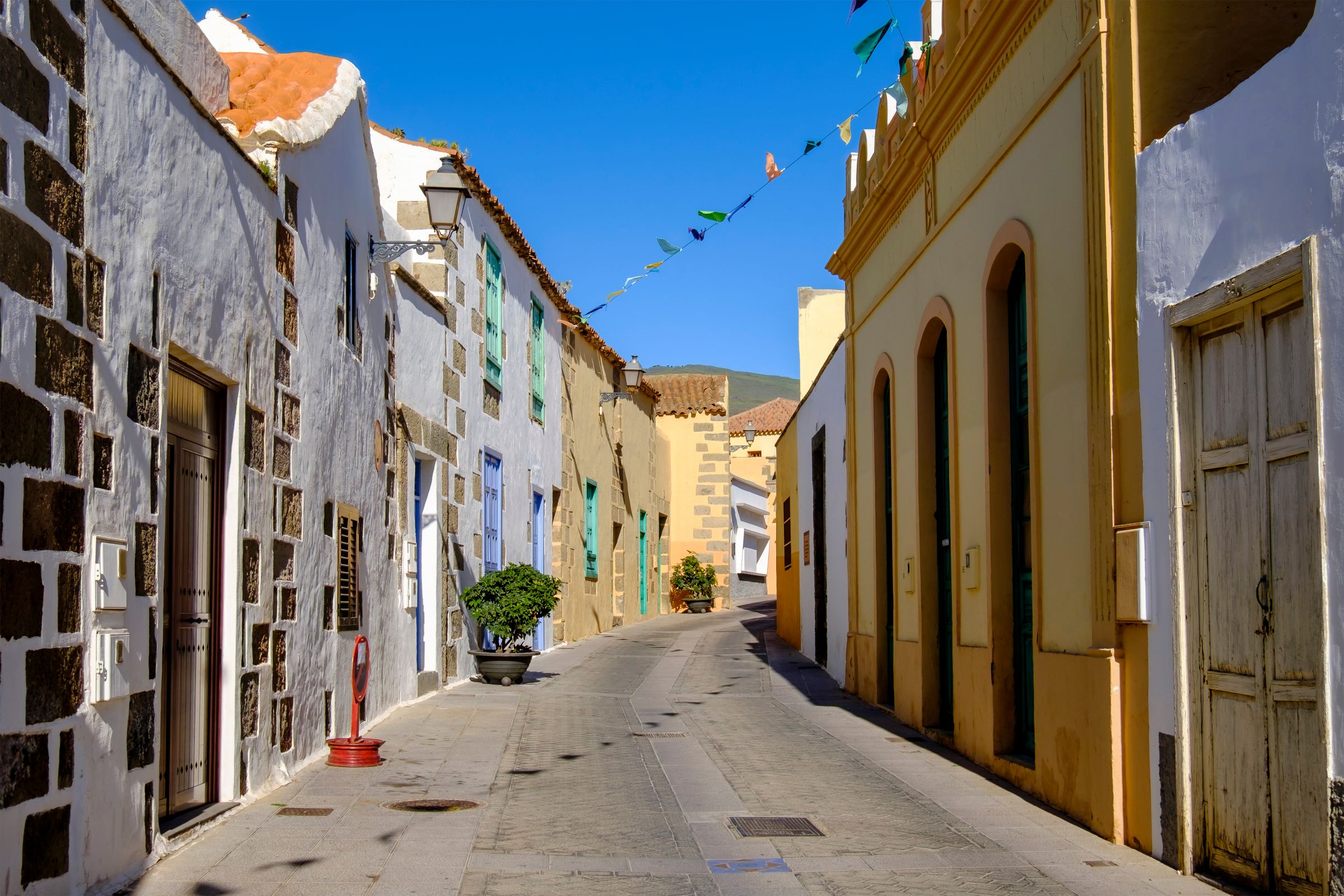
Eco Experiences in Untouched Interiors
Pine forests and rugged ravines fill the island’s interior. I joined a local guide for an eco-tour in Parque Rural del Nublo, learning about rare plants and conservation.
We walked under ancient pines, listening for birds found only in Gran Canaria. Wildflowers bloomed along the path.
If you want to slow down, there are quiet farm stays tucked into mountain valleys. These rural lodges focus on eco-friendly tourism.
One morning, I helped pick oranges for breakfast and learned how locals grow coffee in shady groves.
Nature reserves like Tamadaba are perfect for spotting wildlife. Early mornings brought the sound of woodpeckers and the scent of wild herbs in the cool air.
You really get a sense of discovery in these untouched places, far from the busy beaches.
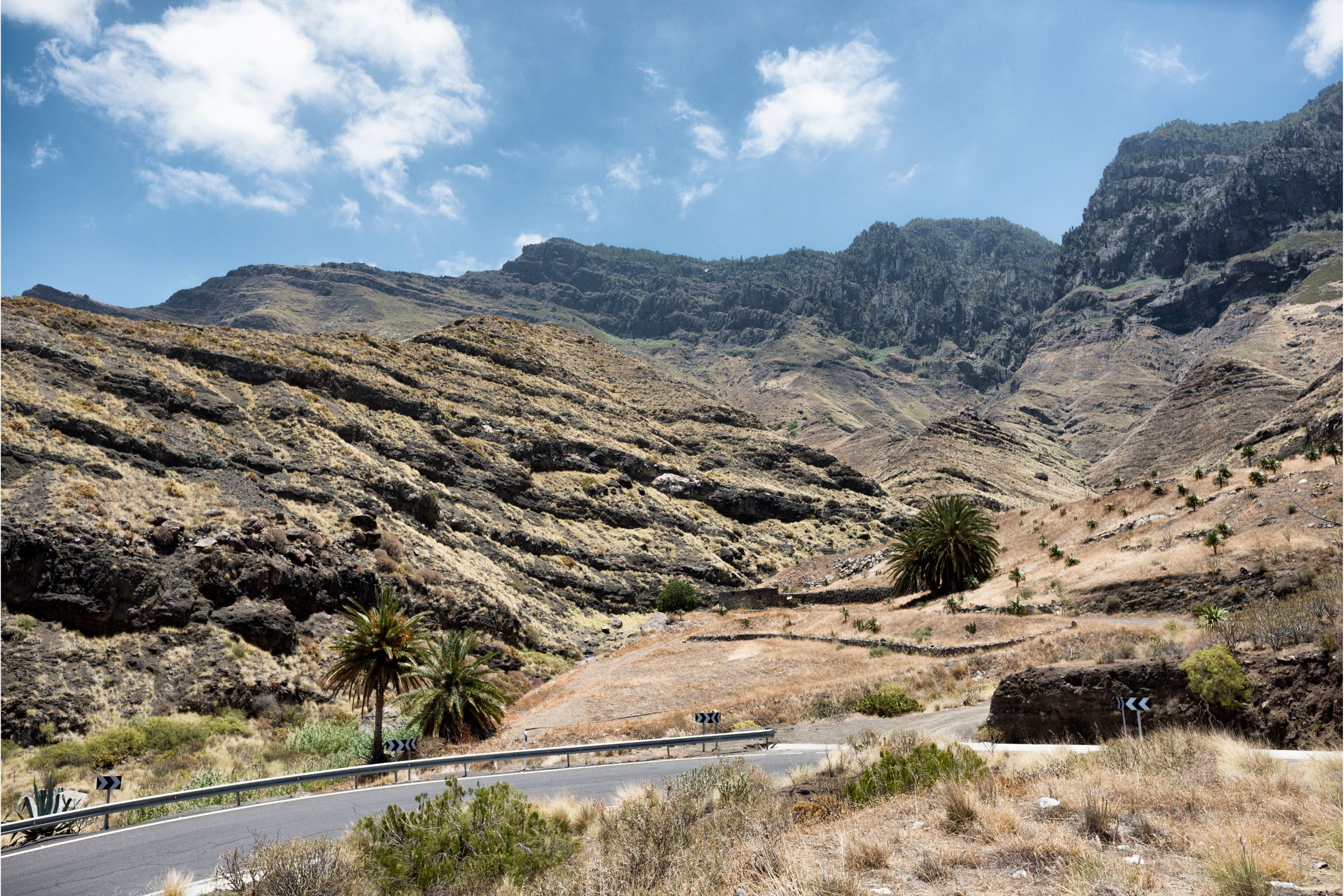
Urban Charms: Las Palmas de Gran Canaria Cultural Insights
Las Palmas de Gran Canaria has a city vibe all its own, blending colonial heritage with the buzz of island life.
Colorful old streets, lively plazas, art galleries, and flavors that feel uniquely Canarian—this city has it all.
Historic Quarters and Modern Life
My time in Las Palmas took me through Vegueta, the oldest quarter. Cobbled streets twist past pastel houses with wooden balconies, and I felt like I’d stepped back in time.
The Catedral de Santa Ana stands tall, its twin towers peeking over quiet courtyards.
But Las Palmas isn’t stuck in the past. Locals mix old traditions with a modern rhythm. Cafés spill into busy plazas, and shops sell everything from designer brands to handmade crafts.
Walking from Vegueta toward Triana, I noticed how easily old and new blend together. It’s a welcoming city for tourists and sunseekers alike.
Quick Tip:
Drop by Mercado de Vegueta in the morning for fresh fruit, cheese, and a lively crowd.

Art, Cuisine, and Local Festivals
Art pops up everywhere in Las Palmas, from murals to the Centro Atlántico de Arte Moderno. I love ducking into tiny galleries where local artists show off their work.
Food is another highlight—classic papas arrugadas (wrinkled potatoes) with mojo, fresh seafood, and sweet bienmesabe are all must-tries.
Carnival is the city’s biggest celebration, with parades, costumes, and music that fill the streets. Markets and concerts keep things lively all year.
I always check the calendar before visiting—you never know when you’ll stumble onto a live show or artisan food fair.
Recommended Experiences:
- Try tapas on Calle Mayor de Triana
- Visit art museums
- Join a street festival for a real local vibe
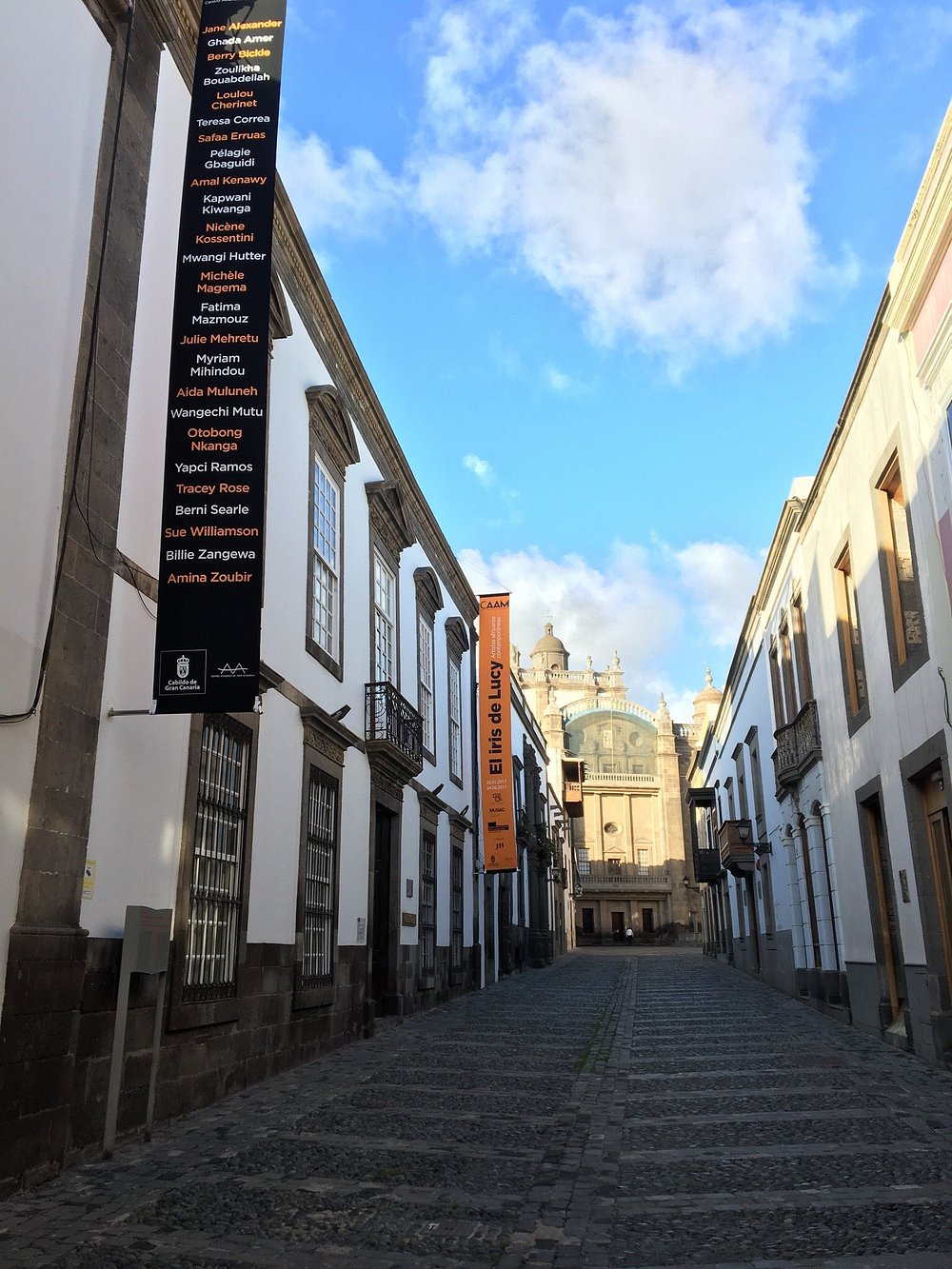
Image Source: Tripadvisor
Luxury and Relaxation: Upscale Resorts and Exclusive Experiences
Gran Canaria makes it easy to treat yourself. From sprawling beachfront resorts to luxurious spas, you’ll find plenty of ways to relax.
Staying in a Five-Star Resort
I checked into a five-star resort right by the soft sands of Playa de San Agustín. The lobby felt open and bright, and the staff greeted me by name.
My room had a private balcony with views stretching across the blue Atlantic.
Most upscale resorts in Gran Canaria offer:
- Heated infinity pools
- On-site gourmet restaurants
- Direct beach access
- Adults-only relaxation areas
- Personalized concierge service
Tropical gardens and private cabanas surround many pools. I enjoyed breakfast on my terrace.
After a day at the dunes or exploring mountain villages, nothing beats coming back to your own quiet oasis. These resorts work for both families and couples looking for a laid-back vacation.

Signature Spas and Private Retreats
I went for the spa, and wow—it took relaxation up a notch. The spa menu had everything from volcanic-stone massages to seaweed wraps.
They mixed local botanicals with some pretty impressive techniques. The whole thing felt more personal than I expected.
Here’s what really stood out at Gran Canaria’s signature spas:
- Private hydrotherapy pools and steam baths
- Massage rooms facing the sea
- Custom facials and wellness packages
- Healthy snacks and herbal teas in quiet lounges
Some retreats even run yoga sessions in the pine forest. Others offer sunset meditation right on the sand.
I walked out feeling refreshed—no more jet lag, and my skin glowed from all the volcanic minerals. Booking a spa day or a private retreat just makes sense when you want to unwind in style.
Doesn’t matter if you’re traveling solo or with someone special; it’s a treat either way.
Gran Canaria in Context: Comparing Island Escapes
Gran Canaria really packs a punch. You get deserts, pine forests, and busy beaches all squeezed into one island.
To see what made it unique, I compared it to the other Canary Islands and a few “miniature continents” elsewhere.
Sister Islands: Fuerteventura, La Palma, and Beyond
Fuerteventura sits just a short ferry ride away. People know it for those endless beaches and constant winds.
Windsurfers flock to Corralejo, where sand dunes slide right into the Atlantic. But honestly, once you leave the soft sands and volcanic hills, Fuerteventura feels quieter and much flatter than Gran Canaria.
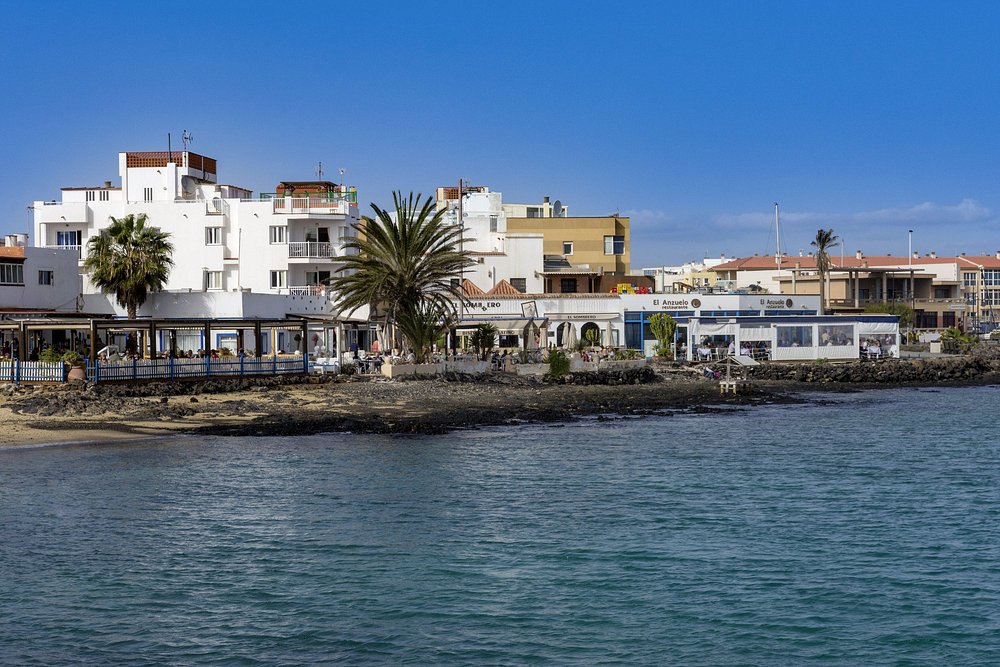
La Palma, on the other hand, attracts hikers and stargazers. Its lush forests and deep ravines completely change the vibe.
Gran Canaria squeezes city life, old villages, and rocky peaks close together. La Palma focuses more on green slopes and a slower pace.
Every Canary Island, from bustling Tenerife to chilled-out La Gomera, has its own personality. But honestly, none of them mix city beaches, golden dunes, and pine woods quite like Gran Canaria.
Comparison Table: Landscape Variety
| Island | Beaches | Forests | Cities | Volcanic Sights |
|---|---|---|---|---|
| Gran Canaria | 🟢 | 🟢 | 🟢 | 🟢 |
| Fuerteventura | 🟢 | ⬜ | ⬜ | 🟢 |
| La Palma | ⬜ | 🟢 | ⬜ | 🟢 |
Key: 🟢 = Strong presence, ⬜ = Limited/less notable
No text was provided for editing. Please provide the text passage you’d like me to edit.
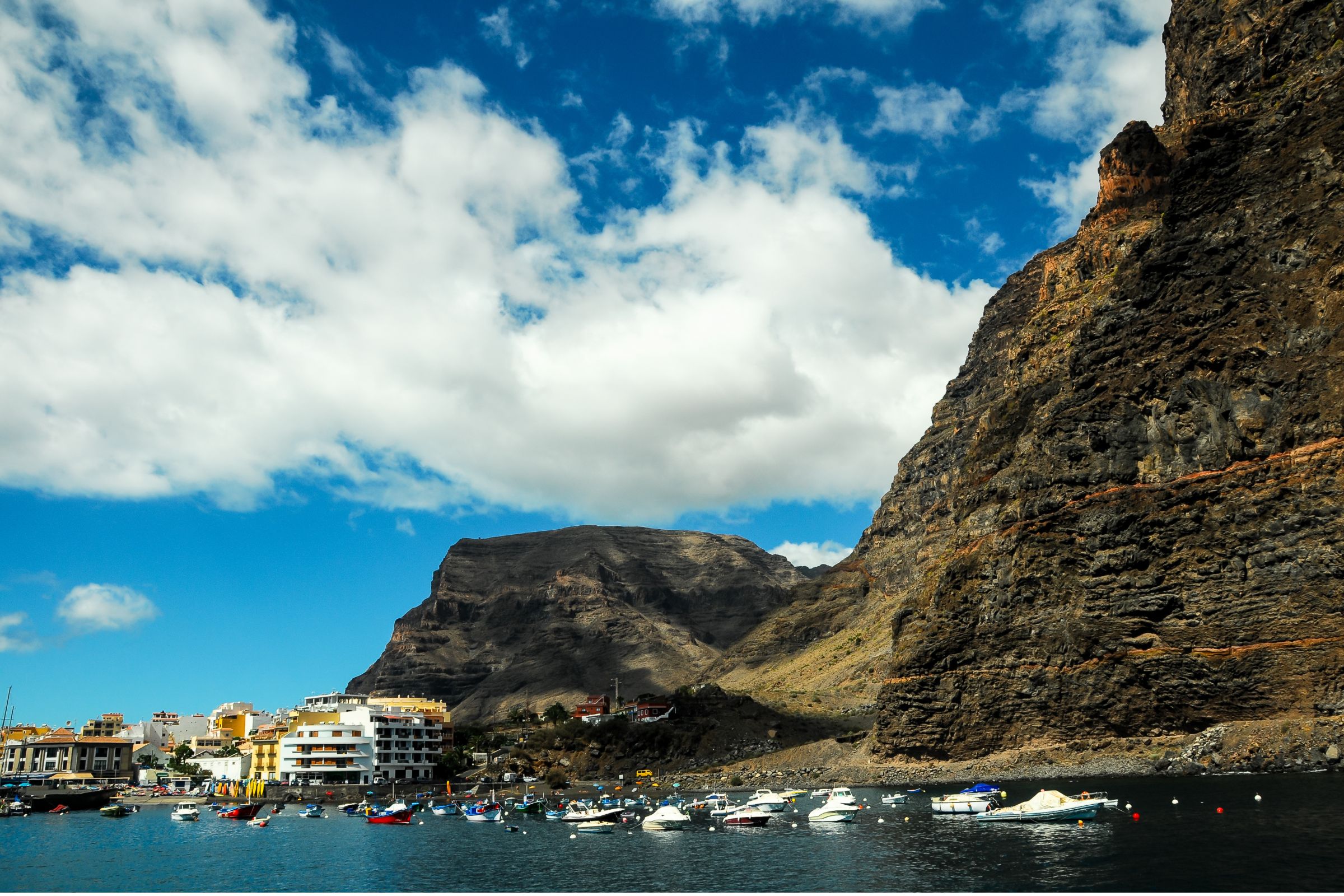
Around the World: Miniature Continents and Iconic Beaches
I love stumbling across places people call a “miniature continent.” Gran Canaria gets that nickname, and honestly, it makes sense—so many landscapes pack into one small island. You don’t see that every day.
St. Lucia in the Caribbean sits right by the water with volcanic peaks and rainforests, but I notice it has fewer cities and less variety in climate.
I’ve spent time on Marco Island in Florida and Jersey in the Channel Islands. Both spots offer classic beach fun, and you’ll find some wetlands or cliffs here and there. Still, they just don’t hit the same sharp contrasts that Gran Canaria does.
Borneo and Kyushu, over in Asia, bring together mountains, rainforests, and beaches. They’re impressive, but everything’s spread out way more.
Corfu in Europe feels pretty lush. It’s beautiful, sure, but it doesn’t strike me as wild or varied compared to Gran Canaria.
Belgium sometimes gets called a “miniature continent” too, even though it’s not an island. The scenery shifts a lot, but it happens on a much bigger scale.
Island Destinations Often Compared to Gran Canaria:
- Kos (Greece)
- Dominica
- Flores (Azores)
- Trinidad
- Lombok (Indonesia)
- Antigua
Most of these islands blend a couple of cool features. But when I wandered golden dunes in the morning and pine forests by lunchtime, I finally got why Gran Canaria owns that “miniature continent” title.

